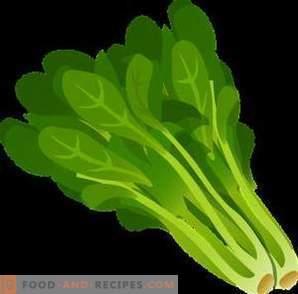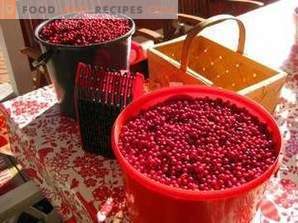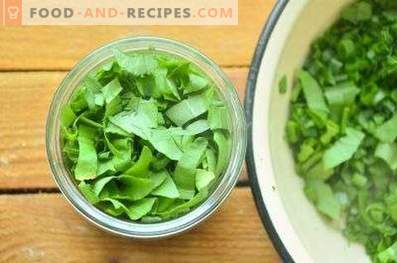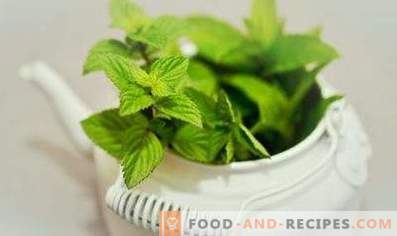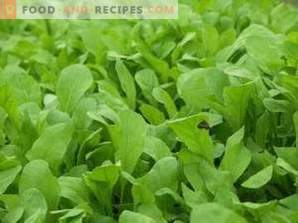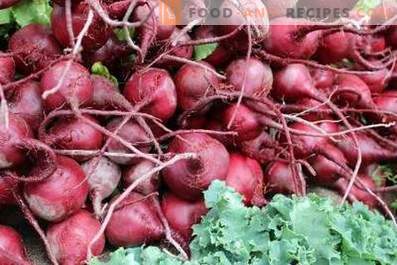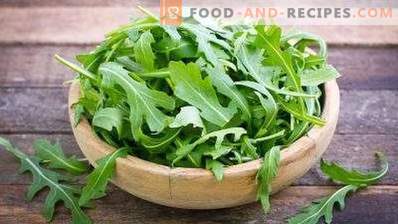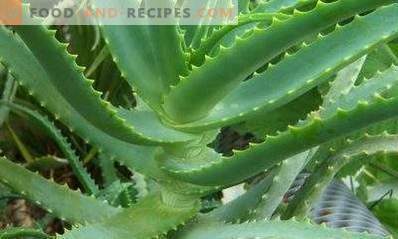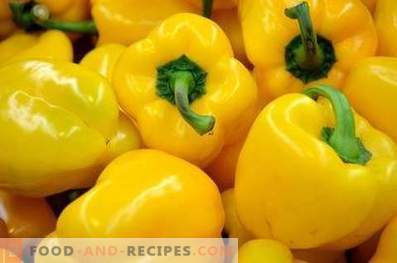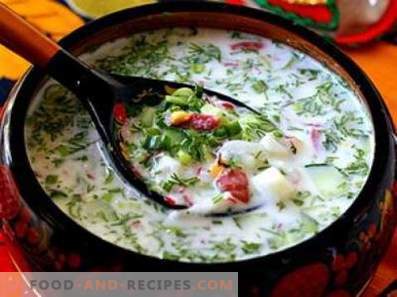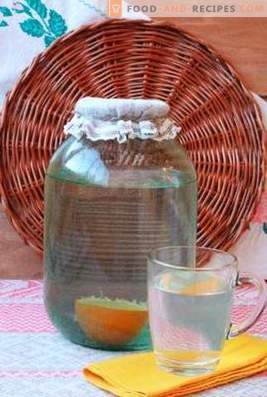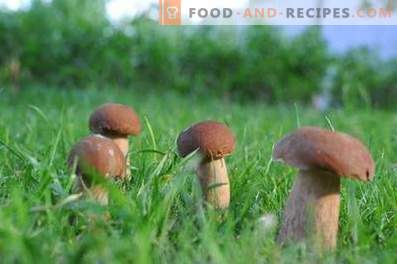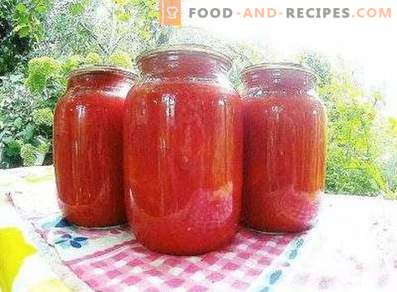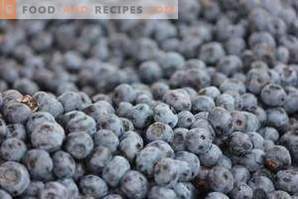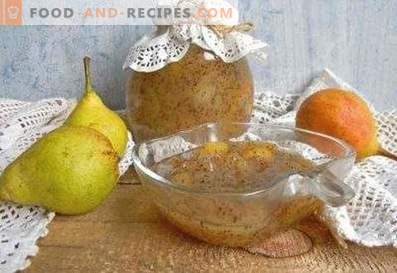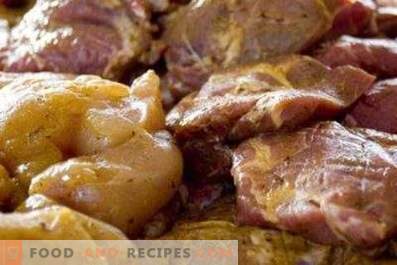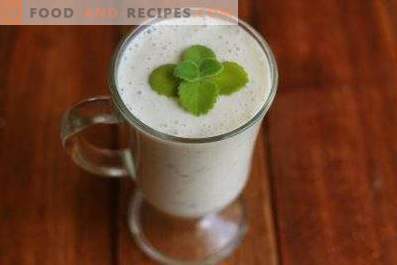
For many, the fern is associated only with a beautiful legend, which tells about its blooming on the night of Ivan Kupala. Or bred it at home as an ornamental plant with large sweeping carved leaves.
Perhaps this knowledge of many of this plant and ends.
But the fern is quite an edible plant, the taste of which, when properly prepared, can be appreciated by even the most captious gourmet.
But the preparation of fern begins long before this action. After all, the taste depends on how well the preparation was carried out.
Where the fern grows
- The fern occupies vast territories. It is found both in the European part and in the Urals, in Siberia, but most of all in the Far East.
- For growth, he chose light glades near mixed forests, lawns, ravines, marshy meadows. Occurs even in the village backyard.
- Sometimes it grows in single groups, but most often it grows, forming whole colonies.
There are many species of fern, but only two types of food are used - eagle and ostrich.
Fern is a valuable culture that is used by the population for preparing snacks, main dishes, canning or pickling. Fern is also exported to Japan, Korea and other Asian countries, where fern dishes are in great demand.
Useful properties of fern
- Fern leaves have tannins, flavonoids, alkaloids, and bitter glycosides.
- In fern sprouts there is protein, carbohydrates, aspartic, nicotinic and glutamic acids, tyrosine.
- It contains vitamins: tocopherol, carotene and riboflavin.
- It is rich in microelements: potassium, calcium, sodium, magnesium, copper, sulfur, phosphorus.
- The fern improves metabolism.
- There are a lot of iodine in fern sprouts.
- Both grass and rhizomes have antispasmodic, sedative, antipyretic, anti-inflammatory, diuretic, choleretic effects.
- Infusion of rhizomes helps with pain in the stomach, joints, and is also a good antihelminthic.
How and when to collect the fern
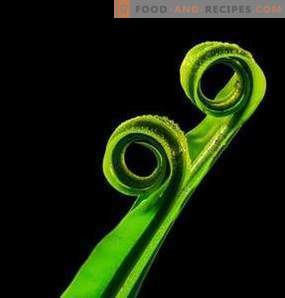
As soon as the first flowers appear (approximately, at the beginning of May), the sprouts (rachises) of a fern with a squiggle on the top, looking like a snail, start to break out of the ground. They are very quickly pulled up, pouring juice. Then the stalk straightens up, the “snail” at the top begins to unfold, and leaves appear. This process takes only a few days — most often five or six.
After this, the harvesting of the fern cannot be carried out, since it will already be unfit for human consumption. First, the plant will become harsh, and secondly, it will be bitter, but most importantly, it will become unsafe for health. After all, like any plant, it accumulates not only useful substances, but also toxins, which it absorbs from the outside.
The growth process of fern is divided into several stages:
- Shoot. The scape is curved in the form of a snail.
- Undergrowth. The scape begins to lengthen, and the tip comes off the ground.
- Elimination of bending. The scape pulls up, straightens, but there is still a rounding in the form of an unfolding snail.
- Schilze. Straight line, and the tip is already deployed.
- The tee. Leaves begin to unfold.
The best time for harvesting a fern is when it is in 3-5 stages. At this time, the stalks of the fern were already saturated with juice, but they did not accumulate toxic substances from the external environment, and also had not yet become rigid and fibrous.
Harvesting fern is carried out when in the third and fourth stages is the maximum number of young shoots. If you start harvesting before this time, you can accidentally tramp down still unappeared shoots, which will negatively affect the harvest of the next year.
It is also not recommended to break the fern all clean, it is advisable to leave its sprouts for further reproduction.
Fern sprouts suitable for harvesting should be no more than 30 cm high for the bracken variety. And they are breaking off not at the very ground, but at a distance of 5 cm from it. Fern sprouts should be approximately the same length and one color (the stalks of different colors must be sorted and grouped).
Then they are collected in bundles, aligned to the tops, loosely tied with an elastic in the lower part. The ends of the petioles in bundles should be trimmed before use, but you can slightly trim them.
Fern bundles are stored before shipment in the shade of the trees, without putting them in a heap, as the plants may deteriorate due to overheating. You can lightly spray them with cold water. Harvested fern is not subject to long storage before use. Therefore, its transportation must be taken care of in advance. Put bundles of fern in tara with a flat hard bottom. Store in a place where the sun does not fall, but there is good ventilation. Shelf life should not exceed more than 10 hours from the moment of the beginning of the harvesting of plants, as from the long storage the ends of the petioles begin to darken and harden, and then it will be necessary to cut the spoiled petioles again, which will significantly reduce the volume of raw materials. The optimal storage time without loss of quality raw materials - no more than three hours.
If it is not possible to take the fern to the place of further processing in time, it can be preserved with the help of salt in several ways.
- The scapes cut in a bunch should be dipped in salt and put in a cool place.
- Fill the fern with cold salted water.
- Prepare a glass, enamel or plastic container. Put a layer of salt on the bottom. Lay on the salt fern evenly. Top with salt. So do a few layers. The top layer must be salt. They put a yoke, put in a cool place and leave for two weeks. Then the brine is drained, and the whole layer of fern is turned over to the other side. Pour the brine again. The shelf life of such a fern is unlimited.
If you follow all the recommendations of knowledgeable fern makers, the collection of this useful and tasty plant will not cause trouble and trouble.
